ShopMay 3, 2025
-

Original Civil War Model 1858 Infantry or Dismounted Enlisted Man’s Greatcoat
$4,500Original Civil War Model 1858 Infantry or Dismounted Enlisted Man’s GreatcoatMay 3, 2025 -
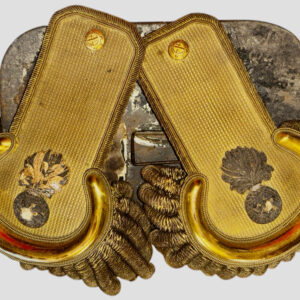
Civil War U.S. Ordnance Officer’s Dress Epaulettes in Original Jappaned Tin Case
$950Civil War U.S. Ordnance Officer’s Dress Epaulettes in Original Jappaned Tin CaseApril 27, 2025 -
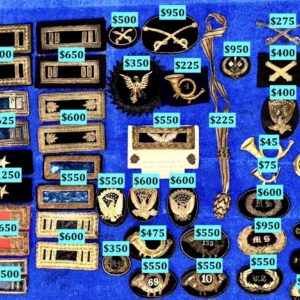
Collection of Original Civil War Officer Shoulder Boards and a Wide Range of Period Insignia
Collection of Original Civil War Officer Shoulder Boards and a Wide Range of Period InsigniaApril 26, 2025 -
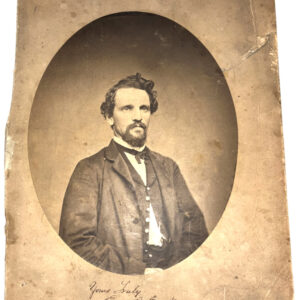
Large Id’d Albumen of a Civil War Navy Engineer on the Steam Sloop USS Richmond -Emo(e)ry J. Brooks – Image by Famed Phila. Photographer Frederick Gutekunst – Image Dated 1862
$450Large Id’d Albumen of a Civil War Navy Engineer on the Steam Sloop USS Richmond -Emo(e)ry J. Brooks – Image by Famed Phila. Photographer Frederick Gutekunst – Image Dated 1862April 26, 2025 -

Veteran’s Escutcheon in Original Frame – Lt. Charles H. Fasnacht – Medal of Honor Winner 99th Pa. Infantry
$750Veteran’s Escutcheon in Original Frame – Lt. Charles H. Fasnacht – Medal of Honor Winner 99th Pa. InfantryApril 21, 2025 -
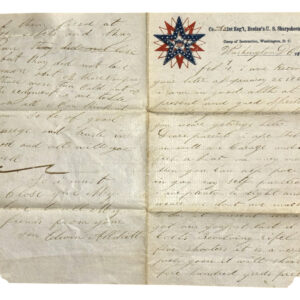
Letter Written by a Member of Berdan’s Sharpshooters from Col. Berdan’s Camp of Instruction in 1862 – Letter Discusses Merits of the Colt Revolving Rifle vs. the Sharps Rifle
$675Letter Written by a Member of Berdan’s Sharpshooters from Col. Berdan’s Camp of Instruction in 1862 – Letter Discusses Merits of the Colt Revolving Rifle vs. the Sharps RifleApril 19, 2025 -
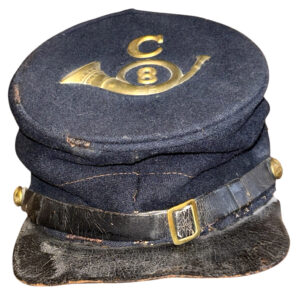
Original Civil War Federal Issue Type II Enlisted Man’s Forage Cap
$3,150Original Civil War Federal Issue Type II Enlisted Man’s Forage CapApril 16, 2025 -
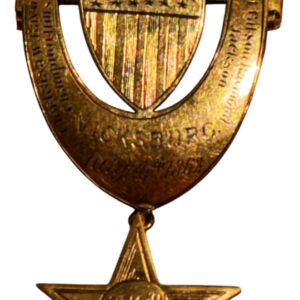
Rare 17th Corps Vicksburg Medal of Honor Awarded to Lt. Kilburn Knox US Regular Army 13th Infantry and Witness at the Lincoln Assassination Conspirators’ Trial
$11,500Rare 17th Corps Vicksburg Medal of Honor Awarded to Lt. Kilburn Knox US Regular Army 13th Infantry and Witness at the Lincoln Assassination Conspirators’ TrialApril 15, 2025 -
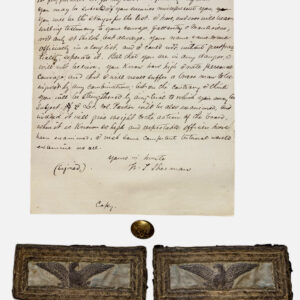
Id’d Civil War Rank Straps, Partial Sword Knot and Frock Coat Button and Letter of Commendation Dictated by Gen. William T. Sherman – Col. Peter J. Sullivan 48th Ohio Infantry
$1,500Id’d Civil War Rank Straps, Partial Sword Knot and Frock Coat Button and Letter of Commendation Dictated by Gen. William T. Sherman – Col. Peter J. Sullivan 48th Ohio InfantryApril 7, 2025 -
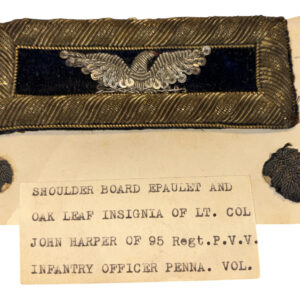
Id’d Insignia and Rank Strap – Lt. Col. John Harper – Field and Staff 95th Pa. Infantry (Gosline’s Zouaves)
$750Id’d Insignia and Rank Strap – Lt. Col. John Harper – Field and Staff 95th Pa. Infantry (Gosline’s Zouaves)April 6, 2025 -
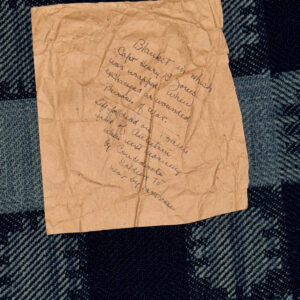
Home-Woven Blanket Used by Confederate Troops to Wrap Wounded Union Officer Capt. Henry R. Jones Co. C 8th Connecticut Infantry After the Battle of Antietam
Home-Woven Blanket Used by Confederate Troops to Wrap Wounded Union Officer Capt. Henry R. Jones Co. C 8th Connecticut Infantry After the Battle of AntietamApril 4, 2025 -

Civil War Period Dress Epaulettes of Captain James William Abert, Regular Army Topographical Engineers
Civil War Period Dress Epaulettes of Captain James William Abert, Regular Army Topographical EngineersApril 2, 2025 -
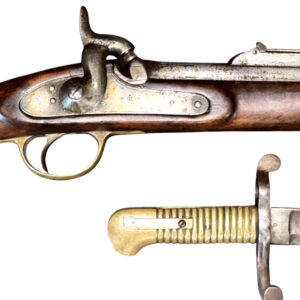
Civil War Period Unusual Brazilian Light Minie’ Rifle
$2,250Civil War Period Unusual Brazilian Light Minie’ RifleApril 1, 2025 -

Id’d Confederate Imprint – Manual for Troopers, Dragoons and Riflemen by Col. J. Lucius Davis Owned by Thomas W. Colley Co. D 1st Va. Cavalry
Id’d Confederate Imprint – Manual for Troopers, Dragoons and Riflemen by Col. J. Lucius Davis Owned by Thomas W. Colley Co. D 1st Va. CavalryMarch 31, 2025 -
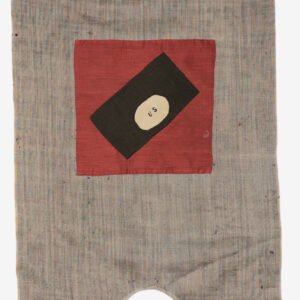
Original Civil War Period U.S. 1st Division 15th Corps Regimental Headquarters Guidon
Original Civil War Period U.S. 1st Division 15th Corps Regimental Headquarters GuidonMarch 29, 2025 -
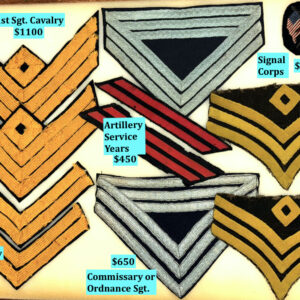
Group of Rare Civil War NCO Chevrons
Group of Rare Civil War NCO ChevronsMarch 28, 2025 -
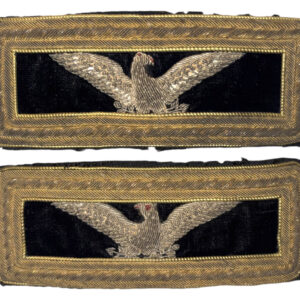
Civil War Id’d Union Infantry Colonel Rank Straps – Col. Clinton D. MacDougall 111th NY Infantry
Civil War Id’d Union Infantry Colonel Rank Straps – Col. Clinton D. MacDougall 111th NY InfantryMarch 28, 2025 -

M1858 Union Enlisted Man’s Type I Forage Cap
M1858 Union Enlisted Man’s Type I Forage CapMarch 27, 2025 -
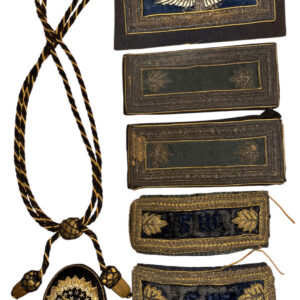
Id’d Civil War Grouping of Rank Straps, Hardee Hat Eagle and Hat Cord – Major Isaac V. Mullen, Surgeon, 14th NY Volunteer Artillery
$1,950Id’d Civil War Grouping of Rank Straps, Hardee Hat Eagle and Hat Cord – Major Isaac V. Mullen, Surgeon, 14th NY Volunteer ArtilleryMarch 17, 2025 -

Group of Original Civil War Enlisted and Officer Hat Cords
Group of Original Civil War Enlisted and Officer Hat CordsMarch 15, 2025


